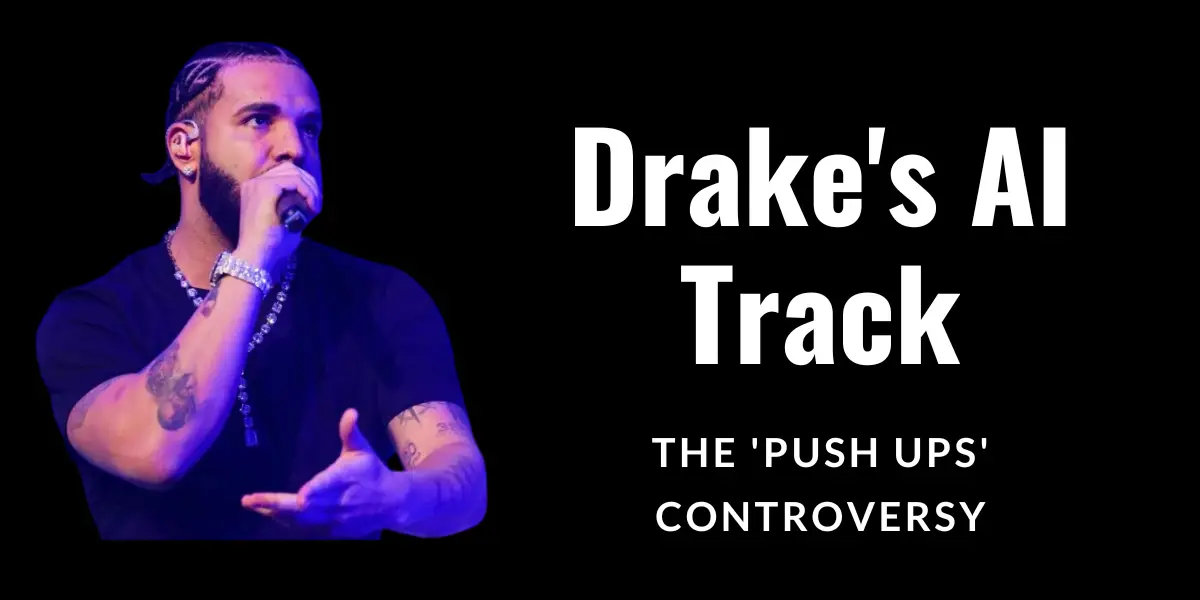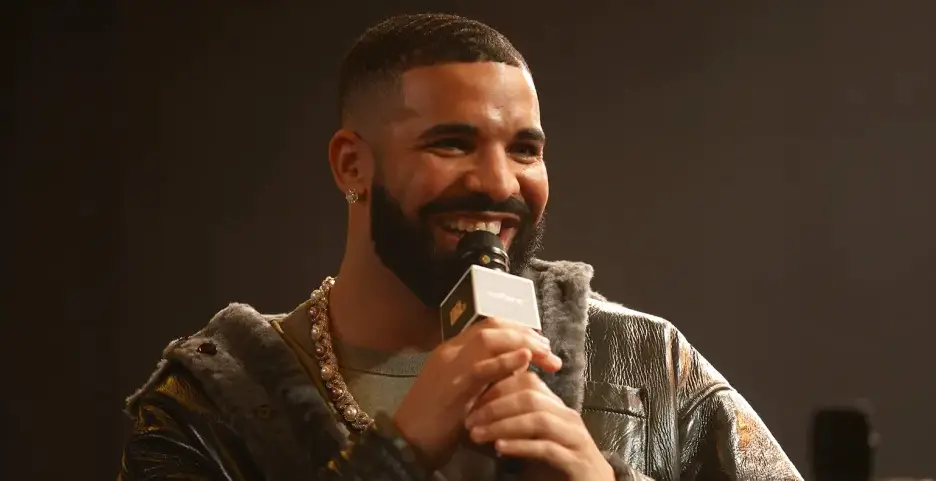The 'Push Ups' Controversy: Decoding Drake's AI Track

The music world has been abuzz with the controversy surrounding Drake’s track “Push Ups,” a song that has blurred the lines between artist-driven music and AI-generated content. As AI technology continues to evolve, its integration into the music industry has sparked debates about authenticity, copyright, and the future of musical artistry.
Explore the controversy around Drake’s ‘Push Ups’ track, suspected to be AI-generated, and its implications for the music industry.
Table of Contents
Drake's AI Controversy

Drake’s latest track “Push Ups” has ignited a firestorm of speculation and debate, stirring the pot in the music industry and among fans. This controversy emerged after a track surfaced online, presenting vocals eerily similar to Drake’s but with slight nuances that raised eyebrows. The ambiguity about the track’s origins was fueled by Drake’s own social media posts, which cryptically hinted at the use of artificial intelligence, further blurring the lines between his authentic work and potential AI mimicry.
The situation escalated when listeners noticed unusual modulations and lyrical styles uncharacteristic of Drake’s usual repertoire, suggesting the possibility of AI involvement. This incident has sparked a broader discussion on the ethical implications of AI in music, questioning the authenticity and integrity of artist-driven content in the era of advanced digital technologies.
What is the 'Push Ups' Track?

“Push Ups” is a controversial track that reportedly features Drake taking lyrical shots at other high-profile artists. The track stands out not just for its aggressive lyrics but for the mystery surrounding its production. Allegedly, it targets industry peers with sharp critiques, wrapped in Drake’s signature flow and style. However, the track’s release did not follow traditional channels, surfacing unexpectedly on various social media platforms, which led to widespread speculation about its authenticity. The content and style of “Push Ups” align with Drake’s history of confrontational tracks, yet the unusual circumstances of its appearance and the subsequent debates about its origin have made it a particularly notable piece in his discography.
Is the 'Push Ups' Track Real or AI?
Determining whether “Push Ups” is genuinely performed by Drake or generated by AI has become a complex puzzle. The track exhibits Drake’s characteristic vocal style and thematic content, yet anomalies in the audio quality and lyrical delivery have led to suspicions of AI involvement. Additionally, Drake’s ambiguous responses and the lack of a formal release statement from his label have only added to the mystery. Critics and fans alike analyze the track’s lyrical depth, vocal texture, and production quality, searching for clues that could point to digital manipulation. This uncertainty highlights the challenges and concerns of authenticity in the digital age, where AI technology is capable of replicating human creativity with increasing accuracy.
How AI Mimics Drake's Voice?
Artificial intelligence has reached a level where it can convincingly mimic human voices, including those of well-known artists like Drake. This technological feat is accomplished through a series of sophisticated processes that analyze and replicate the unique characteristics of an individual’s voice:
- Voice Sampling: AI algorithms start by analyzing a large dataset of Drake’s recorded voice. This includes songs, interviews, and any other available audio samples where his voice is isolated and clear.
- Pattern Analysis: The AI identifies specific patterns in Drake’s voice, such as pitch, tone, cadence, and inflections. These vocal signatures are crucial for creating a realistic simulation.
- Synthetic Reproduction: Using the analyzed patterns, the AI synthesizes new audio clips from scratch. These clips are generated to match Drake’s vocal style in speaking or singing, adhering closely to the identified patterns.
- Refinement and Testing: The generated voice is continuously refined to remove any unnatural sounds or errors. It’s often tested against real audio samples to ensure that it maintains authenticity and is indistinguishable from Drake’s actual voice.
- Final Output: The polished voice can then be used to generate entirely new audio content, theoretically allowing AI to produce songs or speech that sounds just like Drake.
Fan Reactions to the AI-Generated Track
The release of “Push Ups,” rumored to be AI-generated, has elicited mixed reactions from Drake’s fan base and the general public. Here’s a breakdown of these reactions:
Excitement and Intrigue
Many fans are excited by the technological innovation and its implications for the future of music. The idea that AI can create a track that closely mimics Drake’s style is both intriguing and a testament to the advancements in AI technology. Fans express amazement at the quality of the production and are curious about the potential of AI in creative processes.
Skepticism and Disappointment
However, some listeners are skeptical of the AI involvement, feeling that it may detract from the authenticity of the music they love. They fear that AI-generated tracks could undermine the personal connection they feel with artists like Drake, whose lyrical and vocal nuances they deeply appreciate.
Concerns About Authenticity
A significant portion of the audience is concerned about the ethical implications of using AI to mimic artists without clear disclosure. These fans worry about the potential for misleading consumers and the broader implications for copyright and artistic integrity in the industry.
Drake's Official Response to AI Rumors
Drake’s response to the rumors surrounding the “Push Ups” track has been notably ambiguous. He has neither confirmed nor explicitly denied the use of AI in its creation, instead choosing to tease the possibility through social media posts and comments. In interviews, when asked directly about the track, Drake has skillfully deflected, responding with humor or by shifting the discussion towards broader themes of technology and creativity in music. This non-committal stance has only fueled further debate and speculation among fans and critics, keeping the conversation alive. Drake’s playful engagement with the controversy suggests a strategic approach to maintaining public interest and dialogue around his music, regardless of the track’s true origins.
The Impact of AI on Artist Identity
The advent of AI in music is redefining the concept of artist identity, blending the boundaries between human creativity and technological output. This shift has profound implications for artists and the music industry as a whole:
- Transformation of Creative Processes: AI tools can compose music or generate lyrics, potentially reducing the direct involvement of artists in some creative processes.
- Questioning Authenticity: As AI becomes capable of mimicking voices and styles, distinguishing between an artist’s genuine work and AI-generated content becomes challenging.
- Evolving Artist Roles: Artists may evolve into supervisors or curators of AI-generated content, overseeing the creative output rather than being the sole creators.
- Impact on Brand and Legacy: The use of AI can affect an artist’s brand, either enhancing their legacy by extending their ability to produce content or potentially harming their authenticity in the eyes of fans.
Legal Ramifications of AI in Music
The integration of AI in music not only brings new creative possibilities but also introduces several legal challenges that are reshaping the industry.
Copyright and Ownership Issues
Determining who holds the copyright to AI-generated music is complex. When AI composes music or lyrics, questions arise about whether the programmer, the user, the AI itself, or the original data sources should hold the copyright.
- Challenges in defining authorship and ownership
- Potential disputes between creators and AI developers
Royalty Distribution
AI complicates the traditional models of royalty distribution. As AI-generated tracks become more common, figuring out how royalties should be split among human contributors and possibly AI developers is crucial.
- Complexity in royalty calculations
- Need for new models to accommodate AI contributions
Compliance with Existing Laws
The existing legal frameworks were not designed with AI-generated content in mind. Adapting these laws to encompass AI’s role in music creation is necessary but complex.
- Adaptation of copyright laws
- Creation of new regulations specific to AI music
Protecting Artists in the Age of AI
As AI technology becomes more embedded in the music industry, protecting the rights and interests of artists is paramount. Ensuring that artists retain control over their work and receive fair compensation involves several key strategies:
- Clear Legislation: Developing and enforcing clear laws that address the creation and distribution of AI-generated music, ensuring artists’ rights are protected.
- Transparent Attribution: Implementing systems to ensure that contributions by AI are transparently acknowledged, allowing consumers to understand who, or what, is behind the music they enjoy.
- Fair Compensation Models: Establishing fair compensation models that consider the contributions of both human artists and technological tools.
- Education and Awareness: Educating artists about the potential impacts of AI on their work and the industry, equipping them with the knowledge to navigate this evolving landscape.
- Ethical Guidelines: Advocating for and adhering to ethical guidelines that prioritize the artistic integrity and rights of human creators in the deployment of AI technologies in music.
Conclusion
The “Push Ups” controversy encapsulates the complex interplay between technology and creativity in today’s music industry. As AI continues to evolve, it presents both opportunities and challenges that will significantly shape the future of music, artist identity, and copyright law. This ongoing dialogue between innovation and tradition is crucial as we navigate the new frontiers of music and technology.

